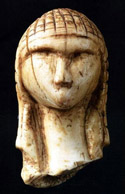Anthropology, Department of

Department of Anthropology: Faculty Publications
Document Type
Article
Date of this Version
5-9-2017
Citation
Richards-Rissetto, H. and J. von Schwerin (2017). “A Catch 22 of 3D Data Sustainability: Lessons in 3D Archaeological Data Management & Accessibility.” Journal of Digital Applications in Archaeology and Cultural Heritage. 6: 38-48. doi:10.1016/j.daach.2017.04.005.
Abstract
Archaeologists can now collect an inordinate amount of 3D data. But are these 3D data sustainable? Are they being managed to make them accessible? The MayaArch3D Project researched and addressed these questions by applying best practices to build four prototype tools to store, manage, visualize, and analyze multi-resolution, geo-referenced 3D models in a web-based environment. While the technical aspects of these tools have been published, this position paper addresses a catch 22 that we, as archaeologists, encounter in the field of 3D archaeology – one that formed the initial impetus for the MayaArch3D Project: that is, while the quantity of 3D archaeological data is increasing, these data are not usually accessible. By researching and addressing 3D data integration and accessibility, we learned many lessons that group around four main issues: sensitivity/security, web-based dissemination, conveying uncertainty, and data storage/reuse/peer review. These are significant current challenges to making 3D archaeological data sustainable.
1. Video of 3D Object Viewer illustrating functionality, MayaArch3D
RichardsRisettoSUPPL2.mp4 (63302 kB)
2. Video of 3D Scene Viewer, MayaArch3D
RichardsRisettoSUPPL3.mp4 (147230 kB)
3. Video of Virtual Tour of Copan's Main civic-ceremonial group, MayaArch3D
RichardsRisettoSUPPL4.mp4 (104491 kB)
4. Video of working virtual reconstruction of Copan, MayaCityBuilder
Included in
Archaeological Anthropology Commons, Digital Humanities Commons, Geographic Information Sciences Commons, Remote Sensing Commons, Social and Cultural Anthropology Commons


Comments
Copyright © 2017 Elsevier Ltd. Used by permission.